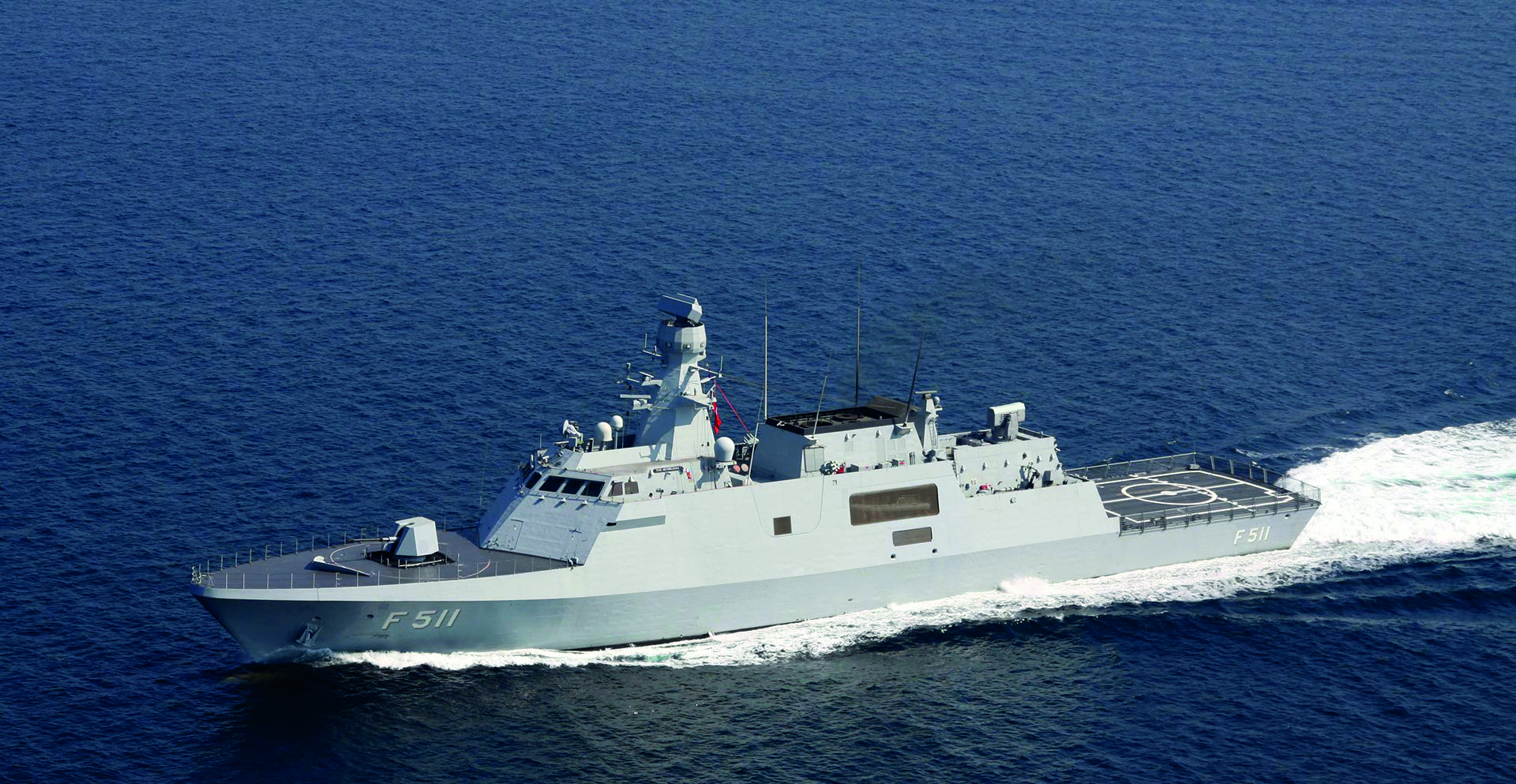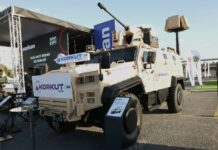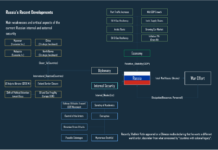The MILGEM Programme: Turkish Naval Procurement and Exports
Bob Nugent
Turkey’s MILGEM programme represents a significant accomplishment in that country’s sustained effort to become a designer, builder and exporter of advanced naval warships.
The MILGEM’s programme history highlights how Turkey has built on the initial domestic customer base for MILGEM corvettes to expand into the export market; a proven business model used by many other naval shipbuilders to add to revenue and market share, while reducing the cost of domestic construction programmes. Further, the MILGEM programme’s initial objective to establish a partnership of Turkish government and industry that would prove capable of advancing to more complex frigate and destroyer designs appears to be on track. This is evidenced by the commencement of the MILGEM G, a small frigate design evolved from the initial MILGEM corvette, as well as the prospect of the TF 2000 destroyer programme.
This article draws on open source material and AMI International’s proprietary naval market forecast and assessment data to review the MILGEM programme in detail. We describe the history of the programme, the design’s capabilities and equipment fit, and provide a short description of current exports to Pakistan and Ukraine. We conclude with some comments on MILGEM’s future in both the domestic and international naval markets.
Programme Background and Initial Results: The ‘Ada’ Class Corvette
MILGEM, derived from the Turkish ‘Milli Gemi’ or ‘National Ship’ describes a programme managed by the Turkish Navy to acquire locally designed, built and equipped surface combatants, ranging from corvettes to destroyers. The ‘Ada’ class corvette is the first project in the MILGEM programme.

MILGEM ‘National Ship’ Programme.
In mid 1990s the Turkish Navy began surveying national resources and gaps related to the design, development, and construction of an indigenous corvette. In 2004, Istanbul Naval Shipyard Command established the MILGEM Project Office to execute and coordinate the design, engineering, and construction of the initial MILGEM ship, which was to be a patrol and anti-submarine warfare ship. The resulting ‘Ada’ class (MILGEM S) corvette design incorporated low observable hull and superstructure elements, as well as advanced sensors and combat management systems. In 2005, Istanbul Naval Shipyard Command commenced the construction of the first hull in the class, TCG Heybeliada.

indigenous ATMACA anti-ship missile system.
Although constructed at the Istanbul Naval Shipyard, the ‘Ada’ class project has drawn heavily on the expertise of the wider Turkish defence sector. Notably, the Turkish defence conglomerate STM has been engaged throughout the project under a series of contracts related to design, classification, model testing and materiel procurement/integration. Other Turkish companies contributing to the ‘Ada’ class programme include Aselsan and Havalsan. A total of four ‘Ada’ class ships were ordered under the programme and are now in service, as listed in Table 1.
The Turkish Navy has integrated the Roketsan ATMACA anti-ship missile system into TCG Kinalıada the fourth and final hull of the ‘Ada’ class. The first three hulls are to be back-fitted with the indigenous missile system.
Next Steps: The MILGEM G
Beginning in mid-2011, various Turkish sources indicated that the initial ‘Ada’ class programme – originally scoped as a class of 12 hulls – would be cut back to eight hulls. The requirement for the remaining four surface combatants would be filled by a new class of frigates known as the TF-100 class. By 2014, however, the TF-100 class programme had been restructured and four enlarged MILGEMs (the MILGEM G class) were envisaged to meet the requirements for units five to eight of the original MILGEM Programme. In 2017, the first hull of the MILGEM G or ‘I’ class, TCG Istanbul (F515), was laid down in Istanbul Naval Shipyard. The ship was launched in 2021 and is fitting out prior to an expected commissioning date of September 2023. The ‘I’ (Istanbul) class is classified as a small frigate, being an enlarged version of the ‘Ada’ class corvette displacing 3,000 tonnes compared to the previous vessel’s 2,400 tonnes.

In late 2021, the acquisition authority for the program, the Savunma Sanayii Başkanlığı (SSB or Defence Industry Agency), issued a Request for Proposals (RfP) for the construction of Istanbul class frigates hulls two through to four. According to the RfP, only local shipyards or foreign sub-system suppliers partnered with local shipyards were allowed to participate. SSB’s RFP further required that bidders must have previously built a surface platform or were currently engaged in building one in partnership with the Turkish Government. This further constrained the competition, and weighted selection in favour of suppliers with MILGEM or other Turkish Navy programme experience.
In January 2023 Turkey awarded contracts for hulls two-four of the Istanbul class to a team made up of STM and TAIS, the latter being a consortium of Turkish private shipyards Sefine, Anadolu, and Sedef. All three yards will build hulls two-four concurrently, with the construction period set for 36 months.
The acquisition strategy of awarding construction to three different shipyards for concurrent construction mitigates risks of delays or disruptions in a single yard affecting the whole programme. It also bolsters the potential exportability of the class in the future by qualifying all three yards as ‘proven builders’ for future potential exports. None of the three yards is currently identified as ‘lead builder’ comparable to the US Navy DDG-51 programme, which splits construction between two yards while identifying one as lead. Of course, future progress, and/or difficulties, may see one of the three yards emerge as a de-facto lead builder as the construction phase unfolds. The acquisition strategy also has the potential to create some interesting competitive challenges for the prime contractor negotiating agreements between the individual builders and leading systems suppliers on cost and delivery schedules for key equipment.
The leverage enjoyed by some Turkish systems suppliers will potentially be considerable, as the MILGEM G class will be equipped with mainly Turkish weapons and systems. A few European systems are found in main gun, torpedo and radar fits, listed below.

Istanbul Class: Specifications and Estimated Capabilities (Source: AMI Worldwide Naval Projection Report)
Anti-Air Warfare (AAW) Systems: Two Rocketsan MDAS eight-cell vertical launch systems (VLS) for 16 Hisar surface-to-air missiles (SAMs). One Aselsan 35 mm Gokdeniz CIWS (rather than the Raytheon Rolling Airframe Missile (RAM) found on the corvette variant). One Leonardo 76 mm/62 dual purpose gun. Detection and tracking will be provided by the Thales Naval Nederland SMART-S Mk2 air/surface search radar.
Anti-Surface Warfare (ASuW) Systems: 16 Rocketsan ATACMA surface-to-surface missiles (SSMs) fired from four quad canisters.
Anti-Submarine Warfare (ASW) Systems: Meteksan TBT-01 YAKMOS sonar together with a Low Frequency Active Towed Array Sonar (LFATAS) installation. The torpedo launching system consisting of two twin BAE Systems Land and Armament Mk 32 torpedo tubes capable of launching Mk 46 torpedoes. The torpedo tubes, located to port and starboard, can either be fixed or trainable. The torpedoes are expected to be replaced by the Roketsan/Aselsan ORKA lightweight torpedoes currently being developed. For torpedo defence, the TNF class will use the Aselsan Hizir torpedo countermeasures (TCM) system.
Electronic Warfare (EW) Systems: Aselsan ARES-2N electronic support measures (ESM) system. Mechanical jamming will probably be provided by two BAE Systems Land and Armament Mk 36 SRBOC launchers for chaff and IR decoys.
Unmanned Systems (UMS): The frigate will not initially be equipped with an unmanned capability. However, given the recent advances in unmanned maritime systems (UMS) in Turkey, it is likely that UMS capability and systems will be added later. The most likely UMS candidates are unmanned air vehicles to increase surveillance range.
Integrated Platform Management System (IPMS): The Yaltes EPKIS integrated platform management system (IPMS) will control platform machinery, electrical power generation and distribution, damage control and auxiliary systems. The IPMS also provides advanced automation for enhanced operational effectiveness and survivability of the ship including an on-board training system, fire detection system, fire-fighting and damage control stability system, and a closed circuit TV system, all to be integrated on one network.
Integrated Bridge System (IBS): Provided by OSI Maritime.
Integrated Communications Suite (ICS): The ICS will be the INCS provided by Aselsan.

serves as bridgehead for future Turkish exports of other warship types.
Export Programmes
Pakistan: Initial reports of Pakistan’s interest in the MILGEM date back to 2015, when the ship was identified as an alternative to building four units of the Chinese designed Type 054A frigate class. In May 2017, a Letter of Intent (LoI) was signed between the Turkish Under-secretariat for Defence Industries (SSM) and Pakistan’s Karachi Shipbuilding and Engineering Works (KSEW) for the construction of four MILGEM corvettes. The announcement took place during the International Defence Industry Fair (IDEF) in Turkey. [1]
The agreement to purchase four MILGEM hulls was signed in July 2018 within the framework of USD 1 Bn contract calling for two hulls to be built at a shipyard in Turkey, and two at KSEW under a technology transfer agreement. Steel was cut on unit one in September 2019, with the keel being laid at ASFAT Shipyard in Turkey in June 2020. The keel for the first Pakistan-built hull (unit 3) was laid in October 2020 at KSEW. As of early 2023, work was underway on all four ships, with the first three already launched. The class, which incorporate a number of variations from Turkey’s ‘Ada’ variant, will be known as the Babur class in Pakistan Navy service.
Ukraine: A December 2020 contract specified the construction of two MILGEM (‘Ada’) class corvettes for Ukraine, along with unmanned combat aerial vehicles (UCAVs), in a deal worth a reported USD 1 Bn. STM is the prime contractor, with the lead unit to be built in Turkey and the second unit at Okean Shipyard in the Ukraine. The keel for the lead unit was laid at STM on 7 September 2021, being named Hetman Ivan Mazepa in August 2022 prior to launch in October of that year. [2] Both corvettes are scheduled to be delivered in 2025 if shipyard operations are not interrupted by the ongoing war with Russia. Each hull’s acquisition cost is estimated to be USD 250 M, or USD 500 M for the two units of the class.
Conclusion
Thirty years on from its conceptual beginnings, Turkey’s MILGEM programme is proving successful in both domestic and export settings. The evolution from the MILGEM S (‘Ada’) class corvette to the MILGEM G (Istanbul) frigate appears to be taking advantage of the lessons learned in operating the initial corvette hulls over the past decade. The next stage in the MILGEM programme, the TF-2000 class destroyer displacing up to 7,000 tonnes, will be a significant challenge, but one informed by continuity in the government-industry partnership (particularly with STM as design agent) and acquisition strategy.
From the export perspective, Turkey’s choice of the corvette as an entry offering is a considered one. The corvette typifies a smaller and simpler ‘starter’ surface combatant that is particularly suitable to many prospective buyers on three counts: (1) corvettes of 2,000-2,500 tonnes represent an evolutionary rather than revolutionary step for navies expanding fleet structures up from coastal and local postures to a longer regional reach; (2) corvettes are a suitable first step for local yards to secure workshare and delivery for a parent design requirement, and (3) corvettes are more accessible (in cost, sustainability and future resource commitments) for budget-constrained customers such as Ukraine, or Pakistan.
Corvette designs such as the MILGEM inevitably face strong competition from European offerings, as well as Asian countries. However, Turkey’s ability to offer a combination of lower prices, technically proficient and local suppliers of advanced weapons, sensor and control systems, and fewer restrictions on export conditions have all worked in favour of overcoming these competitive challenges and help explain MILGEM export successes to date.
In summary, the two ship classes so far making up the MILGEM programme have established Turkey as a reliable and professional supplier to both domestic and export buyers of surface combatants. The MILGEM approach also serves as bridgehead for future Turkish offers of more complex platforms to both domestic and foreign customers; notably submarines.
Bob Nugent
Notes
1. According to AMI, the Pakistan Navy also subsequently moved forward with its plans to acquire Type 054A frigates. The keel for the first hull, PNS Tughril (F261), was laid in December 2018 and commissioned in June 2022. All four hulls are to be delivered by the end of 2025. The MILGEM corvettes and Type 054A frigates are assessed as being complementary. The MILGEMs will serve mainly as ASW platforms, whilst the Type 054A/P has better AAW capabilities.
2. Some sources suggest Okean will be responsible for the final outfitting of both ships.











